|
|
|
Sort Order |
|
|
|
Items / Page
|
|
|
|
|
|
|
| Srl | Item |
| 1 |
ID:
175234


|
|
|
|
|
| Summary/Abstract |
This paper seeks to analyse the adoption of Energy Efficiency Measures in non-residential buildings. Based on the concepts of agency theory and absorptive capacity, the propensity of Micro-, Small- and Medium-sized Enterprises in Portugal to adopt energy efficiency in lighting, insulation, and the replacement and operation of heating, was evaluated. To achieve this, an online survey was carried out, and the resultant data was treated using Probit models. The main findings suggest that absorptive capacity factors are a key reason for adopting more efficient and profitable technologies. Policymakers should provide assistance and information to the managers of these enterprises regarding the benefits of energy efficiency measures. Additionally, this paper shows that subsidiary enterprises are more likely to adopt energy efficiency measures. Although subsidiaries suffer pressures due to agency theory factors, they may also benefit from knowledge transfers from their parent enterprises. Most of the decisions and barriers considered by enterprises are not based on audits or the advice of energy management professionals, since more than 65% of the respondents have never performed an energy audit, and over 82% do not have an energy manager.
|
|
|
|
|
|
|
|
|
|
|
|
|
|
|
|
| 2 |
ID:
125773
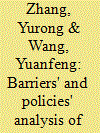

|
|
|
|
|
| Publication |
2013.
|
| Summary/Abstract |
With the rapid economic growth and the improvement of people's living standards, China's building energy consumption has kept rising during the past 15 years. Under the effort of the Chinese government and the society, China's building energy efficiency has made certain achievements. However, the implementation of building energy efficiency in China is still far from its potential. Based on the analysis of the existing policies implemented in China, the article concluded that the most essential and the most effective ways to promote building energy efficiency is the government's involvement as well as economic and financial incentives. In addition, the main barriers in the process of promoting building energy efficiency in China are identified in six aspects. It has been found that the legal system and administrative issues constitute major barriers, and the lack of financial incentives and the mismatching of market mechanism also hamper the promotion of building energy efficiency. Finally, in view of the existing policies and barriers analysis, three corresponding policy proposals are presented.
|
|
|
|
|
|
|
|
|
|
|
|
|
|
|
|
| 3 |
ID:
166923
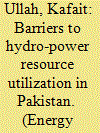

|
|
|
|
|
| Summary/Abstract |
The share of hydro power in the energy mix of Pakistan has not exceeded beyond 40% despite abundant hydro-power potential in the country. Owing to the slow pace of hydro-power development under the public sector, various policy frameworks and institutional arrangements have been introduced to develop the resources by involving the private sector. Even those arrangements have not succeeded in directing the attention of private investment towards the hydropower but the thermal sector. This study investigates the reasons behind the slow progress of hydro-power sector in Pakistan. A mixed approach comprising NVIVO analysis and Q methodology has been used to explore the impending reasons. Both, primary and secondary data, in the form of interviews, published reports, papers and other documents related to the hydro-power sector of Pakistan were collected for the analysis purpose. NVIVO analysis of primary and secondary data identified important variables that were further used for Q methodology. Q methodology revealed four important discourses on barriers to the hydro-power development in Pakistan. Discourses included less participation of private sector in running the electricity market operations, incoherent planning, financial barriers and institutional barriers. The revelation of these discourses is important for framing policies on the development of indigenous renewable energy resources in Pakistan.
|
|
|
|
|
|
|
|
|
|
|
|
|
|
|
|
| 4 |
ID:
111462


|
|
|
|
|
| Publication |
2012.
|
| Summary/Abstract |
Renewable energy is receiving increased attention as a viable alternative to non-renewable electrical generation, however, meeting global energy demands will require a more ambitious renewable energy program than is currently the case. There have been several reviews of potential technological, economic, social, or public barriers and solutions to renewable energy investment. Although important, there is also need for multi-dimensional analyses of these barriers and identification of the most significant underlying barriers if viable solutions are to be developed. In this paper we apply a theoretical framework to examine stakeholder's perceptions and understanding of the barriers to wind energy development in Saskatchewan, Canada. We identify and examine the most significant underlying barriers to investment in renewable energy and the interactions between those barriers. Results show a number of perceived barriers to wind energy investment, however, these barriers can be explained in large part by knowledge barriers, if not disagreement over whether the current level of investment in wind energy is sufficient. We show that barriers to renewable energy cannot be explained solely by technological, social, political, or economic factors in isolation, and that a multi-dimensional approach, identifying and explaining the underlying sources of these barriers, is necessary to develop viable solutions.
|
|
|
|
|
|
|
|
|
|
|
|
|
|
|
|
| 5 |
ID:
175244


|
|
|
|
|
| Summary/Abstract |
Italy has a very low level of uptake of electric cars (ECs), equal to 0.6% for the year 2019, despite significant efforts put in place by policy makers to stimulate their use. This paper investigates the barriers to wider EC diffusion via a survey administered in 2019 to a representative sample (N = 870) of the Italian population. We discuss and rank the barriers, aggregate them via principal component analysis (PCA) on the basis of the polychoric correlation matrix, perform a cluster analysis and analyse the socio-economic determinants of the respondents. The findings of this paper suggest a series of improvements that could be made by various actors. To overcome the financial barriers to EC uptake, Italian policy makers should reinforce incentives at the national and local levels and car manufacturers should bring to the market cheaper ECs belonging to the A and B segments. The charging-related barriers require investments on fast charging stations along the main toll highways and a new regulation regarding multi-house dwellings. Finally, reliable and complete information is needed to enhance knowledge about the technological and environmental pros and cons of ECs.
|
|
|
|
|
|
|
|
|
|
|
|
|
|
|
|
| 6 |
ID:
147289


|
|
|
|
|
| Summary/Abstract |
In the last two years, the so-called “Islamic State in Iraq and Sham” has transformed the Syrian Civil War, effecting serious confrontations in Iraq and Lebanon, dismantling security regimes along the Iraq-Syria border, and causing the mass exodus of ethno-religious communities across the region. These dramatic events are often interpreted through the official rhetoric of the group itself, which draws on discourses of the “Sykes-Picot” conspiracy and narratives of returning to Islamic principles. Tempting though it is to deconstruct such rhetoric on its own, efforts in this direction have over-emphasised its Islamic and territorial elements to the detriment of a deeper understanding of the locally varying, strategic nature of ISIS’s activities in the Middle East. Accordingly, this paper considers how local interests articulate with ISIS’s transnational movement, looking at their activities along the border region of Syria, Iraq, and Turkey. It begins with a discourse analysis of one important narrative in early analysis of ISIS’s “border-breaking” rhetoric, the narrative of Sykes-Picot, before laying out how geographers have engaged with the geopolitics of radical Islamist militant groups more generally. Then drawing on a combination of secondary sources and ethnographic fieldwork in Turkey and Jordan, it elaborates how the politics of place shapes ISIS’s political practice, using the example of the Syrian-Iraqi borderland (the Jazirah). In doing so, I hope to emphasise the relative importance of historical-geographic context over discourse and narrative for understanding the actions of ISIS.
|
|
|
|
|
|
|
|
|
|
|
|
|
|
|
|
| 7 |
ID:
121213
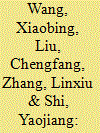

|
|
|
|
|
| Publication |
2013.
|
| Summary/Abstract |
The opportunity to attend college and earn a degree has increased dramatically in China. However, that does not mean that everyone has an equal opportunity. Historically, there has been well-documented systematic discrimination against minorities, women and the rural poor. The main question of this paper is whether or not this discrimination has persisted since the recent expansion of China's tertiary education system. Using a census of incoming freshmen from four tier one universities, this paper assesses if certain types of students are over-represented while other types of students are under-represented. Comparing the shares of students from different socioeconomic and ethnic backgrounds from our primary survey data with government generated census statistics, we conclude that poor, minority and rural female students are systematically under-represented. In contrast, rich, Han, urban males are dominant in college.
|
|
|
|
|
|
|
|
|
|
|
|
|
|
|
|
| 8 |
ID:
124503


|
|
|
|
|
| Publication |
2013.
|
| Summary/Abstract |
The Covenant of Mayors (COM) initiative invites cities to commit themselves to reduce voluntarily the greenhouse gas emissions within their territories. This manuscript presents the COM initiative and analyzes its mechanisms. In order to better quantify the penetration of the initiative, the authors introduce suitable "participation factors". Moreover, a study and a survey are presented concerning the COM initiative in Greece. Certain barriers are identified preventing the realization of the initiative's full potential in Greece. Results from the public survey indicate lack of proper information and communication about the COM initiative and the obligations arising from its signing towards the citizens itself. Nevertheless, once the citizens are informed properly, the public acceptance of the initiative and its commitments is considerable, to the extent that its success would influence the vote of a substantial percentage of citizens. The positive role of supporting structures is evaluated and may be demonstrated through the survey's results and discussion. Recommendations are provided for future or existing signatories based on the findings of this work.
|
|
|
|
|
|
|
|
|
|
|
|
|
|
|
|
| 9 |
ID:
191319
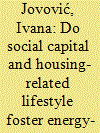

|
|
|
|
|
| Summary/Abstract |
This article explores the role of social capital and housing-related lifestyle in fostering energy-efficient retrofits and sheds additional light on potential barriers and drivers to energy-efficient retrofits in households. Using data from an online survey conducted in August 2020, a retrospective panel data set comprised of 2537 households from the EU member state of Slovenia is constructed. The results of discrete choice models with random effects show that high income levels, the respondent’s age, the age of the dwelling, previously performed retrofits, and the availability of subsidies are drivers, while high regional temperatures and negative GDP growth are barriers to energy-efficient retrofits. We find that social capital and housing-related lifestyle are also important determinants of energy-efficient retrofits. Certain dimensions of housing-related lifestyle, such as energy-saving behavior and a proclivity for ‘do-it-yourself’ home maintenance and repairs, act as drivers of energy-efficient retrofits. The same is true for variables related to social capital, namely, ease of agreement among residents and the formal organization of the building. A policy mix of further education and information campaigns, subsidies, and measures that affect the formal organization of the building and promote community building is required to address the various barriers to energy-efficient retrofits.
|
|
|
|
|
|
|
|
|
|
|
|
|
|
|
|
| 10 |
ID:
176804
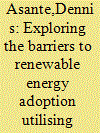

|
|
|
|
|
| Summary/Abstract |
Renewable energy sources development has become popular in recent times for their energy security, employment creation and containment of greenhouse gases emissions. However, the development of renewable energy in developing countries has remained stagnant despite plenteous renewable energy sources due to existential barriers. Herein, using Ghana's renewable energy policy target of 10% other renewables besides hydroelectricity in her total energy mix by 2020 as a case analysis, this study identified and ranked the barriers to renewable energy development. Overall, twenty-three barriers were finalised and categorised under six broad headings, including technical, economic and financial, social, political and regulatory, institutional, and geographical. Subsequently, the proposed Multi-Objective Optimisation based on Ratio Analysis (MULTIMOORA) integrated with the Evaluation based on Distance from Average Solution (EDAS) method was applied to rank barriers and sub-barriers. The political and regulatory barriers ranked highest among the six categories, while corruption and nepotism emerged as the most critical hurdle within the sub-barriers. The findings suggest that specific renewable energy standards, grid connection quotas and simplification of certification procedures are required. A bottom-up approach to renewable energy policy formulation is preferable for inclusiveness and sustainability. Moreover, the paper has developed a framework for the assessment of how each barrier impedes renewable energy development.
|
|
|
|
|
|
|
|
|
|
|
|
|
|
|
|
| 11 |
ID:
149884


|
|
|
|
|
| Summary/Abstract |
Whilst tariff-based approaches to load-shifting are common in the residential sector, incentive-based approaches are rare. This is so, even though providing customers incentives to shape their power consumption patterns has substantial potential. This paper presents findings from an exploratory UK pilot study that trials financial payments and detailed energy feedback to incentivise load-shifting of residential electricity consumption.
|
|
|
|
|
|
|
|
|
|
|
|
|
|
|
|
| 12 |
ID:
191138
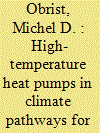

|
|
|
|
|
| Summary/Abstract |
To reach the goals of long-term energy and climate policy, the contribution of the industrial sector is important. Upgrading low temperature industrial waste heat using electric high-temperature heat pumps (HTHPs) can improve the overall energy-efficiency and mitigate CO2 emissions by replacing fossil fuels. The pulp and paper and the food and beverage industries use significant quantities of heat up to 200 °C and therefore have a high potential for the application of HTHPs. In order to assess the role of HTHPs, a techno-economic bottom-up cost optimization model is developed building on the Swiss TIMES Energy system Model (STEM). We present an advanced modeling framework including energy and material flows, with a high temporal resolution and a segregation of the temperature level of the process heat. The results show that HTHPs are cost-effective up to a temperature of 150 °C. Switzerland has the economic potential to deploy of about 100 MWth in the pulp and paper industry and 900 MWth in the food and beverage industry by 2050. Incentivizing the exploitation of this significant potential will require very high CO2 prices of several hundred €/tCO2 or additional policies to overcome investment barriers by supporting investment and flexible system-serving operation of heat pumps.
|
|
|
|
|
|
|
|
|
|
|
|
|
|
|
|
| 13 |
ID:
177144
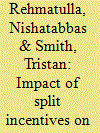

|
|
|
|
|
| Summary/Abstract |
This paper presents the first analysis of how the split incentive market failure affects the implementation of energy efficiency technologies in the maritime transport sector. In maritime transport, split incentives occur due to the different types of charter (resulting in the divided responsibility for fuel costs) existing between shipowners and charterers. The paper uses a robust and rigorous framework of methods to operationalise the split incentive concept in a cross-sectional survey of 275 shipowners, representing around 25% (6000 ships) of the target population, resulting in the most comprehensive data on the implementation of energy efficiency technologies in shipping. The findings show, contrary to that postulated in the literature, that firms that have majority of their ships on time charter (i.e. those that don't directly observe the energy price signal but may potentially receive an energy efficiency premium) have a higher implementation of energy efficiency technologies compared to firms that operate ships on the spot charter (i.e. directly observe the price signal). To some extent the findings could be due to the effect that other confounding variables may have on the implementation of measures and the extent to which the shipping market is correcting or overcoming the split incentive efficiency problem.
|
|
|
|
|
|
|
|
|
|
|
|
|
|
|
|
| 14 |
ID:
124301
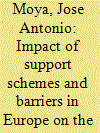

|
|
|
|
|
| Publication |
2013.
|
| Summary/Abstract |
This paper analyses the effectiveness of different support measures to promote cogeneration in the European Union. The analysis looks into the average progress of cogeneration between two different periods. The economic effect of the support measures in each country is quantified with the help of a cost-benefit analysis carried out by the Cogeneration Observatory and Dissemination Europe (CODE) project. The scope of this study is necessarily affected by the need to limit the number of projects and support measures. However, there is no evidence of a relationship between the economic advantage offered by support measures and the deployment of cogeneration in the Member States. The study considers the effect of different barriers (reported by the Member States) on the promotion of cogeneration. The individual analyses of the barriers differ widely in quality and depth. When some barriers are reported, there is an increase of the variability of the penetration of cogeneration. This counter-intuitive fact leads us to conclude that there is a lack of consistency in the barriers reported, and a clear need for consistent reporting on barriers. The possible effect of competition between measures supporting combined heat and power and renewable energy sources is also analysed.
|
|
|
|
|
|
|
|
|
|
|
|
|
|
|
|
| 15 |
ID:
125530


|
|
|
|
|
| Publication |
2013.
|
| Summary/Abstract |
Additional efforts will be needed by European countries to improve the energy efficiency, as with current trends the 20% objective will be missed. Small and medium-sized enterprises (SMEs) manufacturing sector is a promising field, as SMEs are less energy-efficient than larger enterprises. Several studies investigated the barriers to the diffusion of technologies and practices for industrial energy efficiency, but little attention has been paid to understand the factors affecting the perception of such barriers by SMEs. In this multiple case-study, we have investigated 20 Primary Metal manufacturing SMEs in Northern Italy. Economic and information barriers are perceived as the major issues. Interestingly, firm's size, innovativeness of the market in which enterprises operate, as well as product and process innovation are factors affecting barriers to energy efficiency. Differences have been observed within SMEs, especially for information and competence-related barriers. In particular, a more innovative external context in which enterprises operate and a greater production process complexity seem to reduce barriers. Moreover, more product innovative enterprises seem to have a lower perception of behavioral and technology-related barriers. The results of this exploratory investigation provide useful suggestions for policy design and further research on industrial energy efficiency.
|
|
|
|
|
|
|
|
|
|
|
|
|
|
|
|
| 16 |
ID:
176790


|
|
|
|
|
| Summary/Abstract |
To accelerate the electrification of road transport, numerous countries are promoting the diffusion of both Battery Electric Vehicles (BEVs) and Fuel-Cell Vehicles (FCVs). Both technologies hold unique advantages and disadvantages while also facing common barriers with regard to production and diffusion. Barriers may be classified into four categories: 1) supply-side (i.e. vehicle production), 2) infrastructure preparation (i.e. charging and fuelling), 3) demand-side (i.e. spurring societal demand) and 4) institutional design (i.e. stimulating investments and the availability of technology). Relative to BEV literature, studies on FCV diffusion efforts are fewer. Also, while many studies highlight numerous diffusion barriers, knowledge on actual governance strategies to overcome these is lacking. Filling this gap, we examine governance measures used by government and industry in Japan to accelerate the development and diffusion of FCVs. The above framework is applied to examine coping strategies employed, unresolved challenges and potential ways to overcome these. Data are sourced from expert interviews and document analysis. Findings reveal robust measures to tackle supply-side and infrastructure challenges. Conversely, demand-side measures rely on public subsidies and lack regulatory instruments to stimulate vehicle demand. Also, institutional strategies to increase the pool of FCV makers are lacking visible outcomes. We thus lay out several policy suggestions to overcome these unresolved challenges.
|
|
|
|
|
|
|
|
|
|
|
|
|
|
|
|
| 17 |
ID:
112926


|
|
|
|
|
| Publication |
2012.
|
| Summary/Abstract |
In this paper we propose a framework which categorizes energy efficiency barriers based on the stage at which the barriers exist. Barriers to energy efficiency have been widely studied but to our knowledge, except for a few studies, we found inadequate consideration for barrier-barrier interactions when proposing policy measures for improving energy efficiency. Leveraging systems thinking's power as a problem solver which identifies underlying structure that explains (similar) patterns of behavior in a variety of different situations, we attempted to identify patterns of barriers to adoption of energy efficiency measures in industrial companies. Inspired by systems thinking, the proposed framework has four stages, namely, Motivation, Capability, Implementation and Results, as well as a feedback loop. Using a case study, we show that following the four stages will lead to positive feedback for future energy efficiency implementations. The framework highlights the interconnected nature of the barriers and a need for policymakers to address these barriers in a holistic manner. We argue that the overall effectiveness of energy efficiency policies is only as strong as the weakest link in the four-stage framework. This differs from most prior research that addressed barriers in isolation, where a solution is proposed for each of the barriers without considering the relationship between the barriers. Our framework also offers a way to understand the roles and responsibilities of major stakeholders such as governments and energy service companies (ESCOs) in driving energy efficiency. This allows the assessment and identification of weak links in energy efficiency policies.
|
|
|
|
|
|
|
|
|
|
|
|
|
|
|
|
| 18 |
ID:
124223
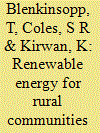

|
|
|
|
|
| Publication |
2013.
|
| Summary/Abstract |
The desire for universal access to modern energy and the use of renewable energy technologies (RETs) as a means of delivering low carbon solutions are driven by several local and global factors, including climate change, population increase and future energy security. Social attitudes are a major challenge to overcome in order to successfully introduce low carbon technologies as a sustainable alternative to more traditional means of energy provision. It becomes a challenge to educate the target population in order to counteract any negative preconceptions or scepticisms in using these technologies which can have adverse effect upon their viability and long term success. This work presents the results of a rural energy survey conducted in the Indian state of Maharashtra. The survey highlights the opportunities and attitudes of these rural communities towards sustainable modern energy services and the technologies used to deliver them. Results from the survey show that there is interest in using sustainable or renewable technologies for energy provision and suggest that cost, reliability and ease of use are more important factors than the environmental benefits. A suggestion for a way to improve RET adoption in rural communities is also presented based on the results of this study.
|
|
|
|
|
|
|
|
|
|
|
|
|
|
|
|
| 19 |
ID:
177112
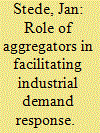

|
|
|
|
|
| Summary/Abstract |
Industrial demand response can play an important part in balancing the intermittent production from a growing share of renewable energies in electricity markets. This paper analyses the role of aggregators – intermediaries between participants and power markets – in facilitating industrial demand response. Based on the results from semi-structured interviews with German demand response aggregators, as well as a wider stakeholder online survey, we examine the role of aggregators in overcoming barriers to industrial demand response. We find that a central role for aggregators is to raise awareness for the potentials of demand response, as well as to support implementation by engaging key actors in industrial companies. Moreover, we develop a taxonomy that helps analyse how the different functional roles of aggregators create economic value. We find that there is considerable heterogeneity in the kind of services that aggregators offer, many of which do create significant economic value. However, some of the functional roles that aggregators currently fill may become obsolete once market barriers to demand response are reduced or knowledge on demand response becomes more diffused.
|
|
|
|
|
|
|
|
|
|
|
|
|
|
|
|
| 20 |
ID:
107657


|
|
|
|
|
| Publication |
2011.
|
| Summary/Abstract |
Socio-psychological barriers play a major role in the continuation of intractable conflicts. They are responsible for the socio-psychological closure that resists and prevents the entertainment of alternative information that could potentially facilitate the acceptance of ideas advancing peacemaking processes. In an attempt to validate a process model that depicts the functioning of the socio-psychological barriers to conflict resolution, an empirical study was conducted among a nationwide representative sample of Jews in Israel, within the context of the Middle Eastern conflict. The reported study utilized a large scale survey, based on a nationwide representative sample of Israeli Jews who were asked to respond to a questionnaire which included the model's selected variables. As hypothesized, the results showed a path leading from general worldviews (e.g. General values, Right Wing Authoritarianism, Implicit theories about groups) to openness to new information and readiness to compromise through the mediation of the conflict-related societal beliefs (e.g. victimhood, delegitimization). These results indicate that closure to new information that may shed new light on both the rival and the conflict emerges as a crucial factor in the maintenance of society members' non-compromising views. The theoretical as well as the applied implications of the findings are discussed.
|
|
|
|
|
|
|
|
|
|
|
|
|
|
|
|
|
|
|
|
|